
|

|
Forum Index : Windmills : Inverter issues
| Page 1 of 2 |
|||||
| Author | Message | ||||
| Achilles Newbie Joined: 18/05/2018 Location: GermanyPosts: 8 |
Hello everyone, my name is Florian, I am from northern Germany and just finished building my first wind turbine system and after I had some wind a couple of days ago but no power I am trying to find the issue. This is the turbine I bought: https://www.alibaba.com/product-detail/HENRYD-2kw-wind-turbine-for-home_60299449838.html?spm=a2700.8443308.0.0.504b3e5fz cXKRn I mounted it on a 9m (30 feet) tower and use this kind of grid tie inverter: https://www.alibaba.com/product-detail/12-years-manufacturer-1000W-wind-power_60643408337.html?spm=a2700.7724838.2017115 .1.5f3d618288f1KC It can handle 22-60V of input voltage. Anyway, the whole system looks like this: 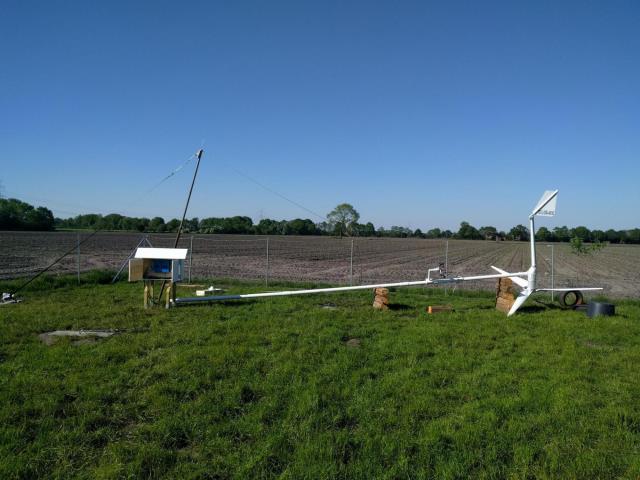 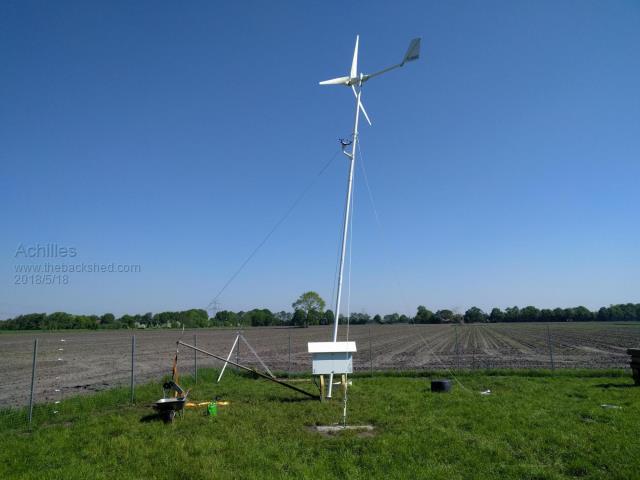 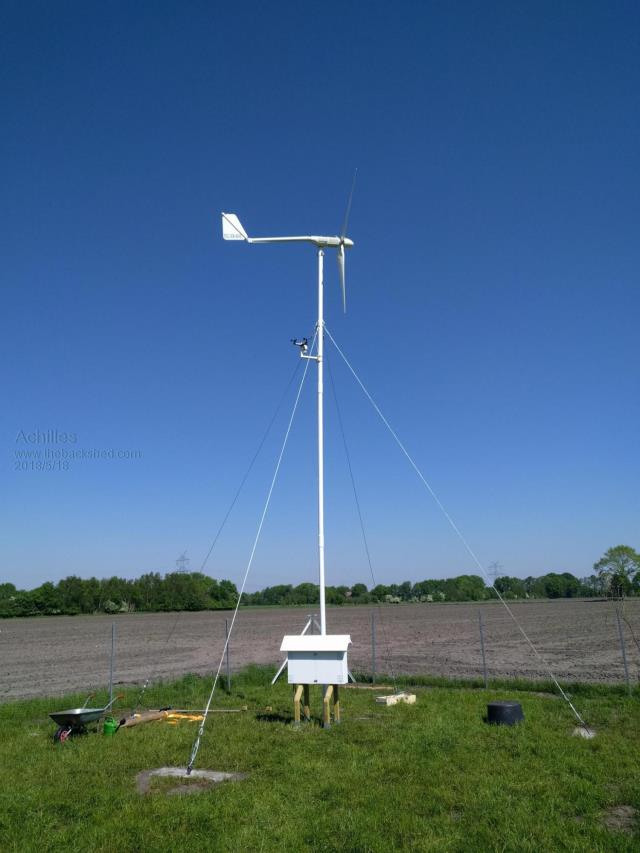 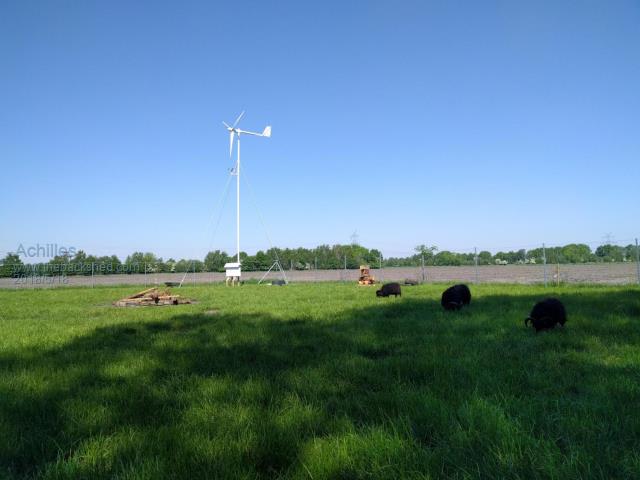 2 days ago I had some nice wind: 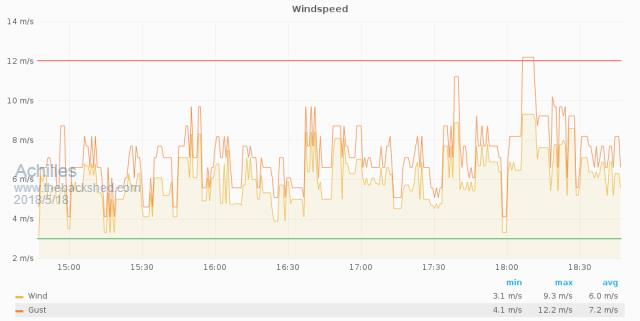 The problem I am faced with now is that I don't get up to speed. Even at 7m/s wind (15.6 mph) it is only rotating at about 60-80 rpms. At that speed I get 30 volts peak and 67W for just a few seconds. I am assuming that the controller / inverter puts too much load on the turbine too early, thus preventing it from spinning up. Maybe you guys have ideas on what is fishy here. I just ordered a 45-90V Inverter to check whether it is different with that one. If not I can still send it back. Another thing that i noticed yesterday is a high pitch squeaking sound coming from the generator. It is hard to notice since it's not very loud, but it is there with every revelation. Maybe you guys can help. :) Thanks Florian |
||||
| DaveP68 Senior Member Joined: 25/11/2014 Location: New ZealandPosts: 292 |
Hi Florian Can I ask what is your PMA's normal output voltage? It states in the specifications "Normal Output Voltage 24v 48V 96v 120v 240v 360v 500v". I take it that when ordering the wind turbine you need to specify what the Normal Output Voltage will be? David There are realities if you do not accept, will lead to frustration because you will be spending time on wrong assumptions and the results cannot follow! The Dunning Kruger Effect :) |
||||
| Achilles Newbie Joined: 18/05/2018 Location: GermanyPosts: 8 |
Hi David, thx for replying. Sorry, I totally forgot to mention it. The PMAs normal output voltage is 48V. Florian |
||||
| Achilles Newbie Joined: 18/05/2018 Location: GermanyPosts: 8 |
I was just outside for an hour trial and erroring those inverters. When I only use one, set a moderate current curve and then let the generator spin up to like 30V and THEN connect the grid tie, it just works fine. Once there is a moment with no wind and power generation stops, it doesn't go higher as 22V when the wind picks up again. I then have to repeat the procedure of disconnecting the inverter, getting some rpms to generate about 30V and reconnect again. Those chinese things seem to be buggy as hell. I've had no luck running them in dual mode though. |
||||
| DaveP68 Senior Member Joined: 25/11/2014 Location: New ZealandPosts: 292 |
Thought it was 48V which means you are stalling the blades at cut in due the 22 - 60 inverter trying to take too much power at low RPM. The 22 - 60 VDC 1000 W grid tie inverters try to take about 20 - 25 W of power at start up. I suspect the 45 to 90 VDC inverter you have on order will solve the problem you have. The blades you have look like they have a tip speed ratio of around 7 to 7.5 at a guess. This means as they start turning want to operate at over 100 RPM in light winds 2.5 - 3 m/s. Here is a TSR graph to illustrait my point 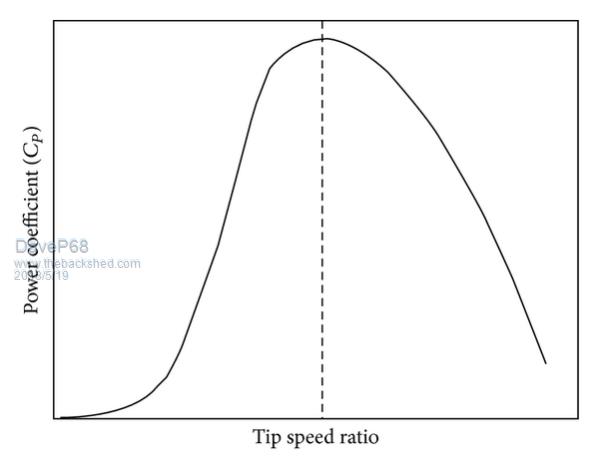 There are realities if you do not accept, will lead to frustration because you will be spending time on wrong assumptions and the results cannot follow! The Dunning Kruger Effect :) |
||||
Madness Guru Joined: 08/10/2011 Location: AustraliaPosts: 2498 |
If it is designed for 48V you should get voltages higher than that easily. with no load. If you can when there is no wind disconnect the wires from the generator to the rectifier and measure the resistance across those 3 wires. You should get an equal number on each of them. You may have a short somewhere, also if there are light winds you could measure the voltages between each of those wires when disconnected. Be careful though as it would be possible to get voltages that are not safe to touch. There are only 10 types of people in the world: those who understand binary, and those who don't. |
||||
| yahoo2 Guru Joined: 05/04/2011 Location: AustraliaPosts: 1166 |
According to the chart you should expect reasonable output at 56 volts and 200 rpm in a 5 m/s wind. if you do some math. 27 volts divided by 115 rpm then multiply the result by the rpm (380) at 2000Watts we get 89 volts. so yes the 22v to 60 v controller is not suitable that is for a 24 volt nominal turbine. Have you got a dump load fitted? What will happen in a strong wind? these things usually output 3-4kw while the furling is limiting the power and that energy has to go somewhere. the squeaking could be a dry bearing (no grease) or something touching and dragging. I know I have been saying this for 15 years, but I am going to say it again. Make sure the blades are not on backwards, the straight leading edge faces forwards, the curved edge is towards the tower. I'm confused, no wait... maybe I'm not... |
||||
| Achilles Newbie Joined: 18/05/2018 Location: GermanyPosts: 8 |
Thanks for all the replies, the 45-90V inverter should arrive next week and I will test it asap. Since the diagram on the vendors website showed 56v max, I was hoping to get away with the 22-60V inverter and also use low wind speeds and therefore low voltages. But I will test the 45-90v inverter and observe how it handles low wind speeds. I thought it would kinda suck to see it all turning at low winds and not putting out power. :/ But if DaveP68 is right, this should not be the case. I will get back to this and report after I've tested it. The 48V version of the inverter has one great advantage though, I would only have to use one as they are available in 2KW versions. I will also measure the voltages between the wires, just to make sure that there are no shortages or anything. I am also waiting to hear from the inverter manufacturer whether the current curve can be adjusted in order no not stall it at 20-22 volts. In terms of breaks and dump loads: While planning I thought about a 48V heating element in a bucket full of water. Missouri Wind and Solar sell them quite cheap, but I have to pay shipping and customs so I haven't ordered them yet. I do not trust those flimsy chinese "1500W" dump loads. They may survive a few high speed gusts, but certainly not a fully fledged storm. The inverter has some kind of break built it. I noticed, that when I let the turbine spin up to above 60v and the connect the inverter, it slows down the turbine to a halt gracefully, not like shorting the generator. This also happens when I disconnect the tie from the grid. The shorting feature can be enabled at a certain voltage though. Last wednesday, as we had some great wind speeds I was also able to observe the mechanical yawing protection during some gusts. In terms of mounting errors, I read about those before and paid very close attention when assembling the rotor. I'm certain that it is built correctly. :) The vendor told me that the rotor was balanced at the factory and thus the blades were labeled. Yet I still detected some wobbleing during spin up. So since I will take down the generator today anyway in order to find and fix that squeaking I will also check the rotor for any imbalance. Thanks again for the help so far and I will get back to you once I know more. Take care Florian |
||||
| DaveP68 Senior Member Joined: 25/11/2014 Location: New ZealandPosts: 292 |
The 56 VDC max on the vendors website "only relates to charging batteries" not when connected to a resistive load or a MPPT Grid Tie Inverter. Can be a bit misleading to those new to this wind turbine stuff... As per Yahoo2's back of envelope calculations you should be able to reach 90 VDC into your "45 - 90 V GTI inverter" in medium to high winds. These GTI inverters have a form of PWM brake/load dump function. Yes they do need a suitably sized resistive load to take "ALL of the power from the PMA" in the event the Gird goes offline (disconnected). Please refer to my topic 1000 W Wind Grid Tie Inverter repair and read down the bottom of the page relating to "Over Voltage Protection" a for of load dumping. There are realities if you do not accept, will lead to frustration because you will be spending time on wrong assumptions and the results cannot follow! The Dunning Kruger Effect :) |
||||
| yahoo2 Guru Joined: 05/04/2011 Location: AustraliaPosts: 1166 |
Since this is a DIY forum we would prefer to see dump loads built out of scrap. old heaters, stove and oven elements, floodlights or even heavy gauge soft tie wire strung between insulators. You can run a fan to dissipate heat. The dump load you buy is only nichrome wire on an insulator cut to a specific length to get a certain resistance. Almost every heater element is made from nichrome wire. You just need enough of them in parallel to handle 3200+ watts and finish up with the right resistance. roughly 60 volts and 53 amps that's going to be 1.1-1.2 ohms 38 of these, OK maybe not, that only 90 watts each at 60 volts. electrical laws but you get the general idea, 3.2 kw is a lot of wind turbine to handle in a storm. (90v x 90v) / 43 ohm is 190 watts. 16 units if it is switching on at 90 volts and 35 amps I'm confused, no wait... maybe I'm not... |
||||
| Achilles Newbie Joined: 18/05/2018 Location: GermanyPosts: 8 |
This is why I came up with the idea of a 25L (6.6 gal) water bucket with heating elements. I don't have to worry about heat dissipation, because even at 3.2KW it takes quite some time to get that amount of water to boil, especially in fall/winter, where storms are much more likely. Also, the dump is only utilized if the grid fails, is that correct? Which is usually the case when a storm hits though. Here in Germany this rarely happens though. I cannot recall a single outage in the last 5 years. Don't get me wrong though. I know that it can and will happen and when it does, I need a reliable dump. Edit: By the way, I performed maintenance on the turbine yesterday. The Blades where offset by up to 2cm (.8 inches) which I corrected to be within 2mm (.08 inches). It looks like this solved my wobble during spinup problem that I completely forgot to mention. The Squeaking was fixed by simply applying some good old WD-40 to where the shaft leads into the generator, rotated it a few times in both directions and tadaa: Silence! Looks like my 22-60V inverters are going to be sold on ebay then. Your thread about how to repair those things actually led me to this forum. ;-) I have one of those 1KW things with 22-60V of range that was fried. I cannot use it for my 2KW turbine, but I'm certainly not throwing it away. |
||||
| yahoo2 Guru Joined: 05/04/2011 Location: AustraliaPosts: 1166 |
51 minutes to boil. not enough in my opinion. It needs to work when you are not home. you can short the phases together and stall the turbine but only in a medium wind, if the wind is too strong it will not stop and melt a coil then overspeed and destroy the blades. good to hear the squeaking stopped there must be a seal or something on the shaft to keep moisture out. I'm confused, no wait... maybe I'm not... |
||||
| yahoo2 Guru Joined: 05/04/2011 Location: AustraliaPosts: 1166 |
I dont know, what happens when your controller reaches its limit? my opinion is it will fry the MOSFET's, I dont think a 2kw inverter is big enough to handle that turbine. I would have thought that the inverter needs to cater for the max power (3.2kw) of the turbine at 20+ m/s not the rated power (2kw) of the turbine at 9 m/s. I would think that any time there is a fault of any kind, either in the grid or in the inverter it will switch on the dump load not just during storms. This turbine is rated 2100watts at 9 m/s, that is only 32 km/h, where I live that can happen any day of the week. I'm confused, no wait... maybe I'm not... |
||||
| Thai Newbie Joined: 22/05/2018 Location: United StatesPosts: 30 |
So did you figure what's wrong? I'm having the same problem with fp to 22v inverter gti. Please let me know how u fix |
||||
| Thai Newbie Joined: 22/05/2018 Location: United StatesPosts: 30 |
Check your resistors. If you replaced them or damaged them, they can slow down your turbine. I had to try everything in the book to figure it out. Last thing I thought would be the cause is the dump load. Of course when all the windy days are gone I figured it out. Had 20mph winds and I missed it |
||||
| Achilles Newbie Joined: 18/05/2018 Location: GermanyPosts: 8 |
Hi everyone, sorry for the delay. I was able to test a 45-90V inverter and it works much better. The turbine spins up to much more rpm than with the 22-60v inverters and even in slow wind conditions (like 3m/s). It then reaches 40-45 volts at which point the inverter kicks in. Apperently the 22-60V inverter put too much load on the generator too early. Since a single 2000W inverter cannot handly this turbine, I'm getting 2 of those and run them in parallel. I will adjust the current curve so that each inverter draws only half the current. I tested this config with my 22-60V inverters and it does work properly. So with this setup I will not run each of the inverters at more than 80% load, even during storms. As a dump load I plan to use 2mm fence tensioning wire which I will wind around bricks. I have hundreds of meters of that stuff lying around. Yep, I know. We had a few thunderstorms last week. My weather station recorded wind of 50 km/h (31mp/h) and gusts of up to 66 km/h (41 mp/h) and the weather station is about 2 meters (6 feet) further down. I'm glad I shorted the generator before the storm. |
||||
| yahoo2 Guru Joined: 05/04/2011 Location: AustraliaPosts: 1166 |
Good work!, sounds like you are getting your head around it. if your wire is soft enough you can measure the resistance of a length of wire, fold in half stick the two cut ends in a vice and twist the folded end to halve the resistance if it needs to be bigger.  when I used to put up turbines it would either be dead calm for days or blowin its arse off. I'm sure i was jinxed. when I used to put up turbines it would either be dead calm for days or blowin its arse off. I'm sure i was jinxed.I'm confused, no wait... maybe I'm not... |
||||
| DaveP68 Senior Member Joined: 25/11/2014 Location: New ZealandPosts: 292 |
Hi Florian Good to hear the 45-90 V GTI worked as I suspected it would. Sounds like you have this under control. Also handy feature being able to control the start current too. This will be important when stacking them. So they can now be programmed? On an earlier generation of this type of inverter I did a hardware modification so only one inverter started at cut in around 44 V pulling about 0.44 Amps. The other inverter started up at 48.5 V far enough apart in voltage that the blades had built up enough energy to run the dual inverters. Used a zener diode in series with volt drop resistor on voltage sensing A/D input. Worked great. There are realities if you do not accept, will lead to frustration because you will be spending time on wrong assumptions and the results cannot follow! The Dunning Kruger Effect :) |
||||
| Achilles Newbie Joined: 18/05/2018 Location: GermanyPosts: 8 |
They can, check the picture. 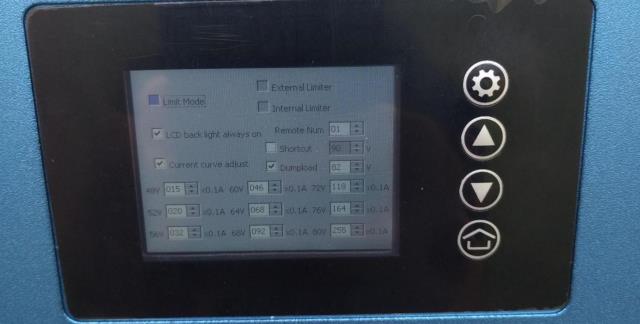 But not the start current which was the issue with the low voltage version of this inverter. Once the 45-90V model starts up it actually works all the way down to 40V which is very nice in low wind speeds. I'm curious about how well the dump is going to work. I will post some pictures once I have built the resistors. I will also let you know how well 2 of those work in a stacked setup. |
||||
| Achilles Newbie Joined: 18/05/2018 Location: GermanyPosts: 8 |
I may have to do that as well. The 2nd inverter arrived today and after installing it I observed that the blades did not speed up as much as it was the case with a single inverter. (I modified the voltage points to split the current evenly between the 2, modification is only possible from 48V upwards though.) I will wait and observe before I modify the hardware though. Today wasn't particulary windy. 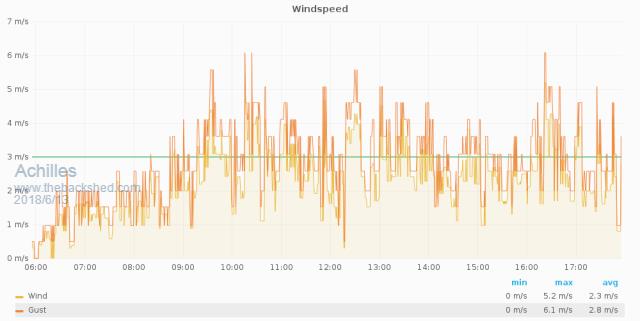 Can you tell me what kind of zener diodes you used, or just send me a link to the forum thread, if there is one? |
||||
| Page 1 of 2 |
|||||
| The Back Shed's forum code is written, and hosted, in Australia. | © JAQ Software 2025 |